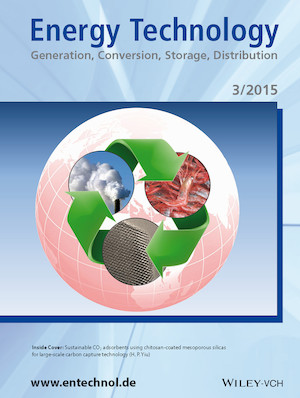 Inside Cover: Sustainable CO2 Adsorbents Prepared by Coating Chitosan onto Mesoporous Silicas for Large-Scale Carbon Capture Technology (Energy Technol. 3/2015)
Inside Cover: Sustainable CO2 Adsorbents Prepared by Coating Chitosan onto Mesoporous Silicas for Large-Scale Carbon Capture Technology (Energy Technol. 3/2015)
Sustainable Carbon Dioxide Adsorbents: The cover image illustrates the concept of utilizing natural waste materials for tackling another world-wide environmental problem: global warming. Carbon capture has been hailed as one promising process to tackle the problem of the ever increasing emissions of carbon dioxide from industry. Liquid-phase absorbents such as amine solutions associate with high energy consumption in regeneration and reuse, whereas niche solid-state adsorbents including metal–organic frameworks and aminated mesoporous silica still require the use of organic solvents, toxic aromatics, and silanes for their relatively small scale syntheses. Chitosan, derived from a natural waste material (chitin), has amine groups on its polymeric structure, which allows the selective adsorption of acidic gases such as CO2. In the Full Paper on page 249 by Gregor Sneddon, Alexey Ganin, and Humphrey Yiu at Heriot-Watt University and the University of Glasgow (Scotland), researchers demonstrate a simple method to prepare chitosan/mesoporous-silica composites for selective CO2 adsorption. These materials not only show a comparable CO2 adsorption capacity to some aminated mesoporous silicas, but they also allow regeneration at the low temperature of 75°C and retain 88 % of their capacity after 4 cycles. As no toxic solvents are involved and synthesis is conducted at ambient conditions, these chitosan/mesoporous-silica composites can be regarded as truly sustainable with strong potential for application in industry.




